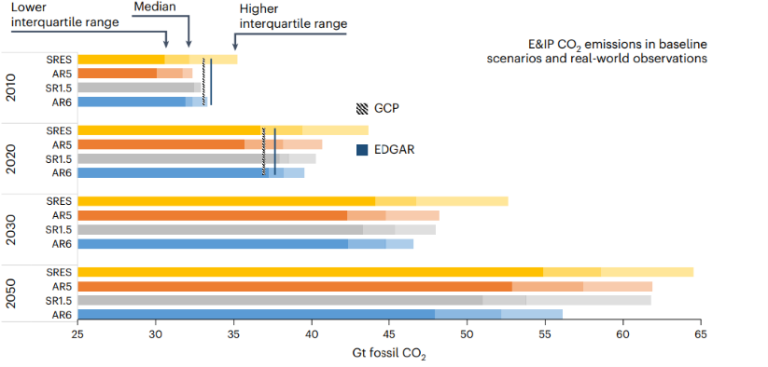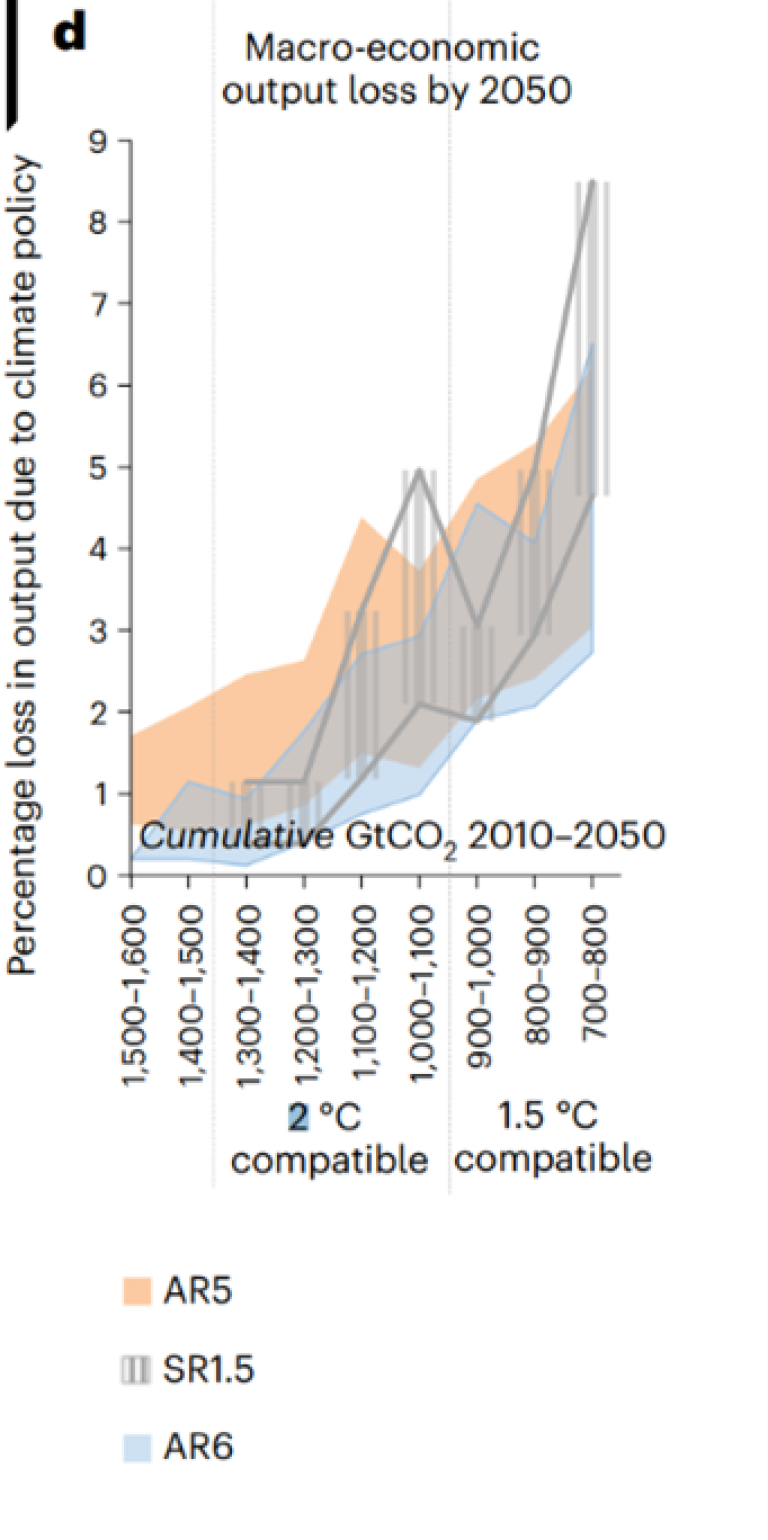Photo by Karsten Würth on Unsplash
How has climate policy and technology affected the transformation toward a low-emission future?
While emissions have grown and climate targets become more ambitious over the last decade, the investments needed to limit global warming to below 1.5-2°C have not increased, thanks to faster-than-expected reduction in costs of clean technologies such as solar, wind and battery storage. This analysis was published in Nature Climate Change.
CICERO researchers have together with other European scientists analysed the influence of climate policy and technology on the emissions pathways assessed by the Intergovernmental Panel on Climate Change (IPCC). The results of the analysis, led by The Basque Center for Climate Change (BC3) and published in Nature Climate Change, are based on data from the last two IPCC assessment reports (AR5 and AR6) covering two generations of emission scenarios. The article also had an accompanying News and Views Article.
The IPCC periodically assesses the global climate change research literature. Its reports are the central source of information for international climate policy, providing objective data on causes and consequences, as well as possible mitigation strategies.
A key component of these publications are scenarios of greenhouse gas emissions. Data from the two most recent reports, finalized in 2014 (AR5) and 2022 (AR6), formed the basis of an analysis. The researchers examined the evolution and changes in energy and socio-economic systems in climate change mitigation scenarios assessed by the IPCC over a decade.
"Our goal was to observe whether factors like policy and technological advancements have influenced the pathways outlined by the IPCC. We found that scenarios without specific climate policies show lower co₂ emission levels over time due to falling costs of low-carbon technologies and reduced economic growth expectations, reducing projected energy demand," explained Dr. Dirk Jan Van de Ven from BC3, the lead author of the study.

On the other hand, in the case of ambitious mitigation pathways aligned with limiting global warming to below 1.5-2°C, more recent trajectories tend to lean toward greater electrification and a higher share of renewable energy in electricity generation. Simultaneously, reliance on coal, nuclear energy, bioenergy, and carbon capture and storage (CCS) has gradually decreased due to changing costs.
“Over the last decade, emissions have grown, and climate targets have become more ambitious, yet the investments and costs needed to limit global warming to below 1.5-2°C did not increase, thanks to more optimistic projections about the costs of low-carbon technologies,” said Dr Glen Peters, a senior researcher from CICERO Center for International Climate Research.
The changing patterns, such as greater electrification and an increased share of renewable energy in electricity generation in AR6 compared to earlier reports, were particularly emphasized in scenarios developed by organizations in Europe.

"European scenario developers have provided a large number of scenarios for the IPCC reports we've considered, which is why their influence on the patterns in the IPCC scenario databases is so strong. To create a more diverse range of perspectives, we should focus on improving this representation and find ways to encourage and support modeling teams from outside Europe to share their scenarios," said Dr. Shivika Mittal, a senior researcher from CICERO.
The analysis emphasizes the need for continuous recalibration of models and scenarios to keep pace with technological, political, and social advancements, as well as to maintain political relevance in climate change mitigation.
The analysis is also a reminder on the correct use of scenarios. Scenarios are based on the knowledge and interests of the researchers at the time the scenarios are developed. The lacklustre performance of carbon capture and storage and carbon dioxide removal technologies, in contrast to the unexpectedly fast progress of solar and wind power, means that scenario developers have had to recalibrate their analysis to a new reality. This is clearly shown in the analysis.
“Understanding what the energy system will look like in 50 years is nigh impossible, as policy and technology evolves in ways that were not perceived,” said Peters. “The value of scenarios is not to use them as crystal balls, but to use them to understand trade-offs and make robust policies and decisions, given the irreducible uncertainty of the future.”
The article “Energy and socioeconomic system transformation through a decade of IPCC-assessed scenarios”, published on January 3 in Nature Climate Change, was part of the "NDC ASPECTS" and "IAM COMPACT" research projects, funded by the European Union's Horizon 2020 and Horizon Europe research programmes.
